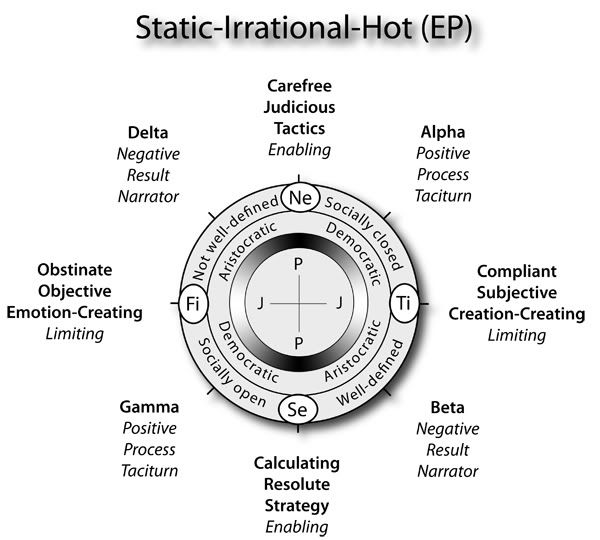...about type change?
Say you want to change your type from ENTp to ESTp. Then:
All the dichotomies in bold shouldn't change at all since they're the same for ENTp and ESTp. *The union of the dichotomies E, T, P, ET, EP, TP, ETP designates creating Ti.* They shouldn't be affected at all whether you are ILE or SLE.Code:E N >> S T P EN >> ES ET EP NT >> ST NP >> SP TP ENT >> EST ENP >> ESP ETP NTP >> STP ENTP >> ESTP
In other words, the dichotomies E, N, T, P are linearly independent. Changing N >> S has absolutely no effect on T.
There is no such thing as "maximum Ti" among EPs, since the T dichotomy isn't affected by the change from ILE to SLE. So what's the purpose of grafting Ti to the right side of the clockface? Does this mean that subtypes are not fully defined in Smilexian socionics?
discuss!




 Reply With Quote
Reply With Quote ). I've only ever skimmed through his articles.
). I've only ever skimmed through his articles.




